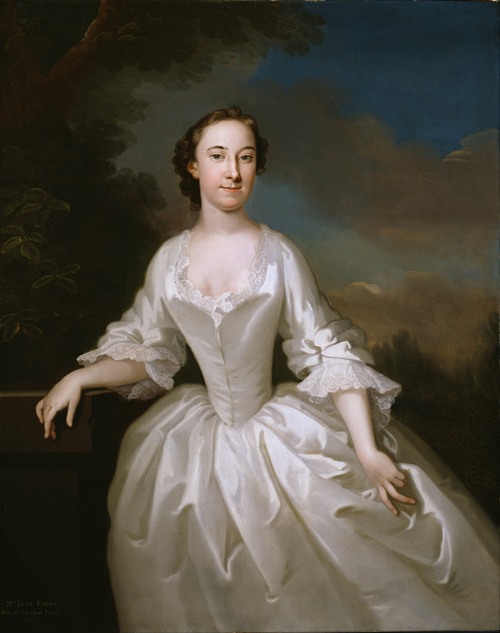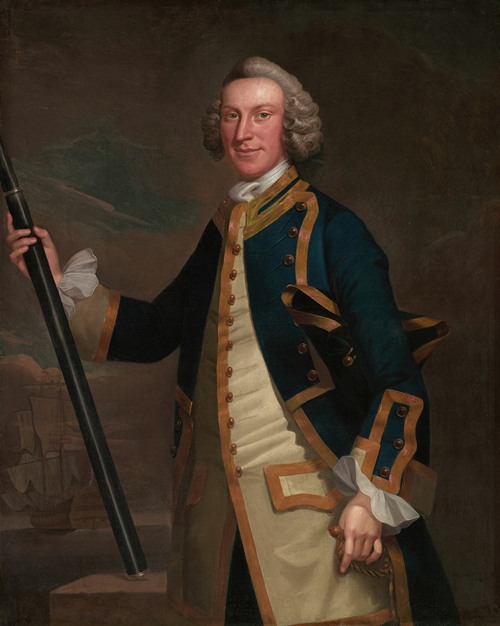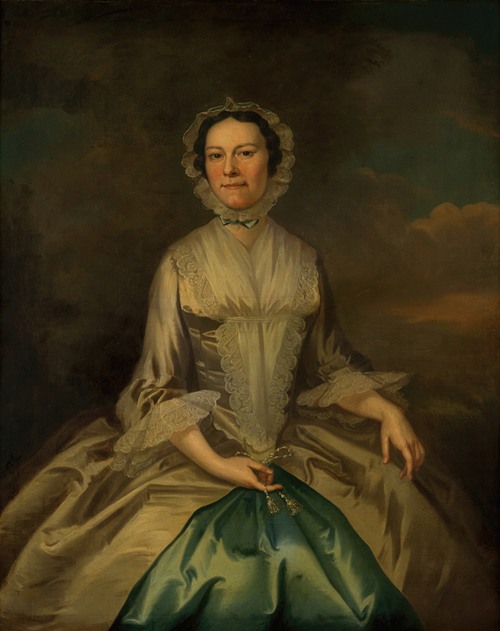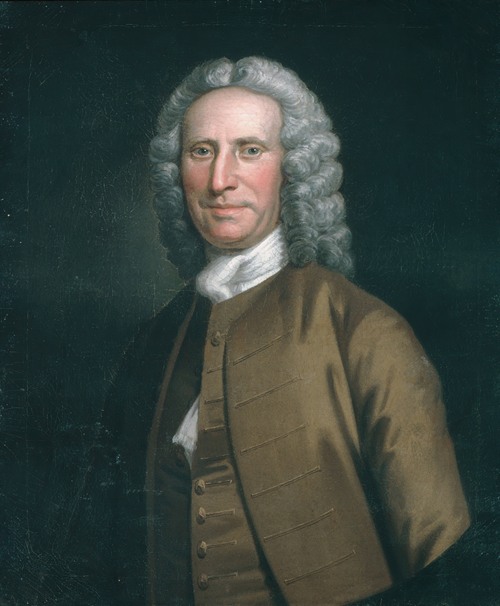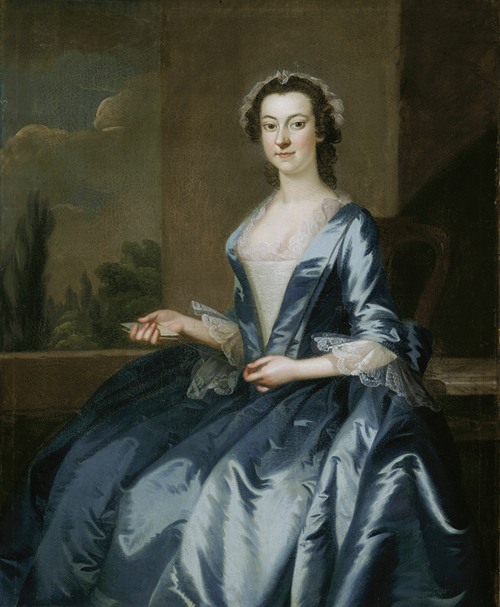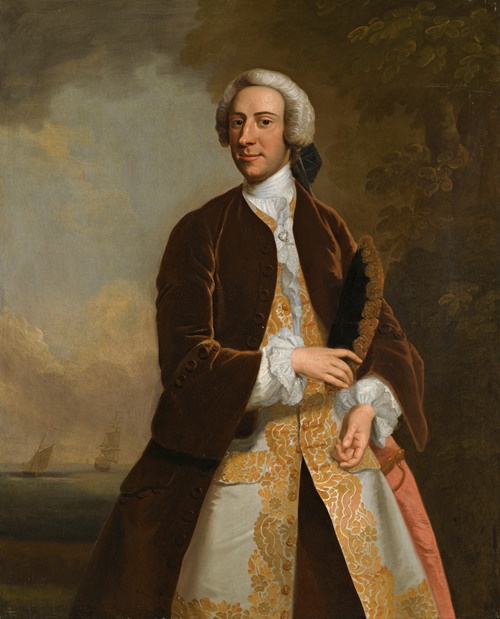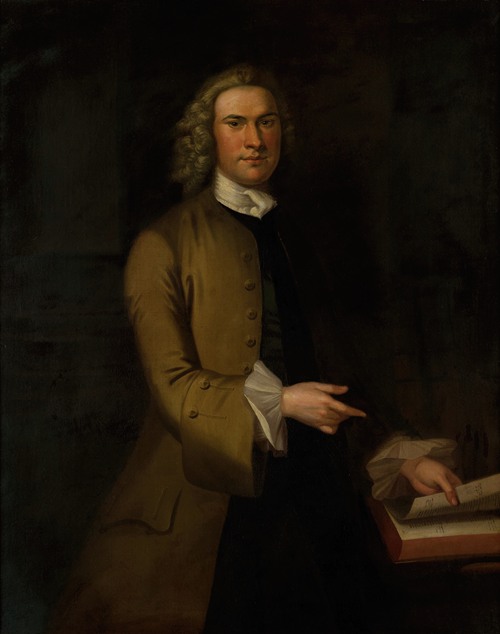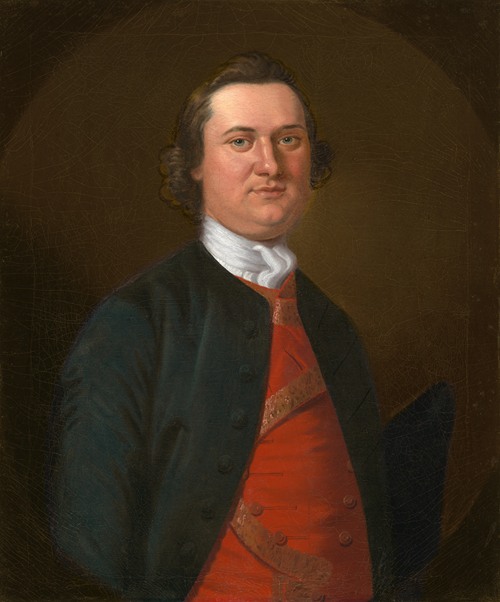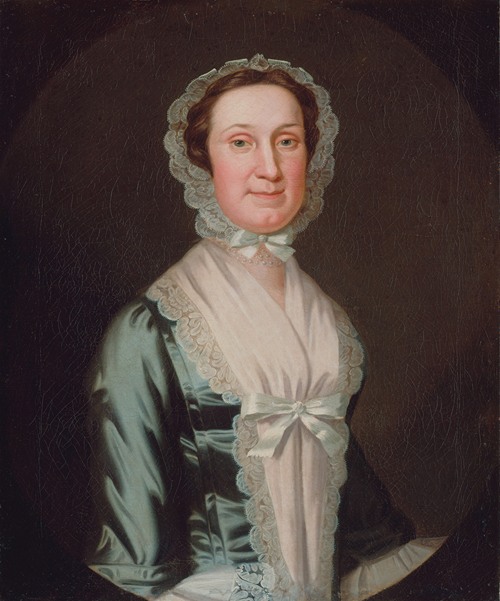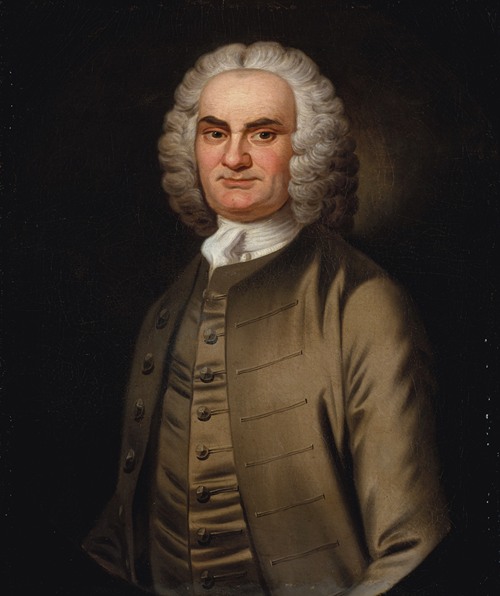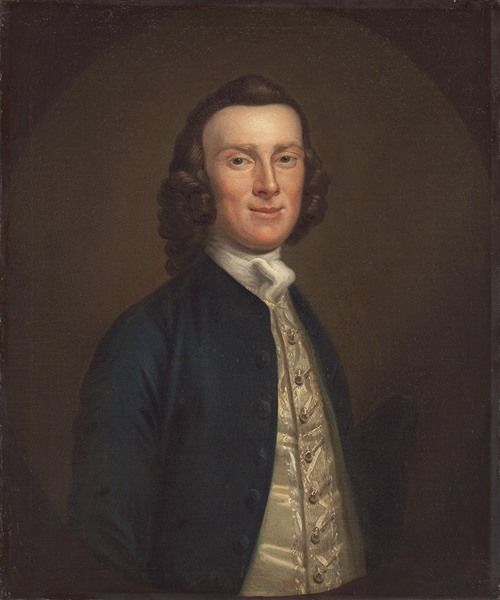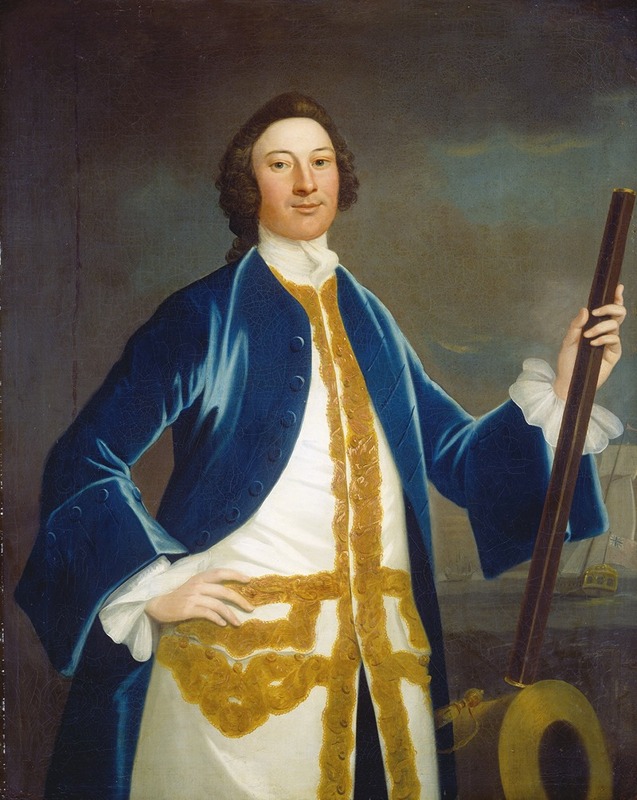
John Wollaston was an English painter of portraits who was active in the British colonies in North America for much of his career. He was one of a handful of painters to introduce the English Rococo style to the American colonies.
Little is known of Wollaston's early life. He is believed to have been the son of a painter, born in London. Some sources give his father's name as John Wollaston; others, citing Horace Walpole's Anecdotes of Painting in England of 1765, suggest that his father's name was John Woolston, and that he later changed his name to Wollaston. Similarly, little is known about his artistic training; Charles Willson Peale, in a letter dated 1812 and written to his son Rembrandt, mentions that Wollaston trained in London with a painter of drapery, but nothing else has been recorded.
It seems evident, from his painting style, that by the time of his American sojourn he had either acquired further training or had developed his personal style a good deal on his own. Stylistically, Wollaston's work bears some similarity to portraits by Thomas Hudson and Allan Ramsey, among others, and it has been suggested that his teacher was Joseph van Aken, who completed the drapery in paintings by these and other artists of the period. That Wollaston considered himself English rather than American may be seen by the label on the back of a portrait of William Smith, Jr. painted in 1751; the label describes the artist as "Johnannes Wollaston Londoniensis".
Wollaston's first securely documented work, executed in 1742, is a portrait of Methodist evangelist George Whitefield; the original still exists, in the collections of the National Portrait Gallery in London. An engraving was produced after it by John Faber Junior. A handful of other paintings dating to before his trip to the colonies also exist, including a portrait of an unidentified officer of the British Navy now in the National Gallery of Art.
Wollaston crossed the Atlantic in 1749, settling for a time in New York City; there he introduced the latest and most fashionable of London styles in portraiture to American patrons. In 1752 he journeyed south, spending a short time in Philadelphia before arriving in Annapolis by the spring of 1753. During the following year or so he completed some sixty portraits of Marylanders. He next moved to Virginia, producing a comparable amount of portraits of locals between 1755 and 1757. Throughout he continued using the compositions and portrait types he had learned in London; although somewhat outmoded by this time, they remained impressive. By the fall of 1758 Wollaston was back in Philadelphia; he was last recorded there in May 1759. It seems likely that he visited the West Indies before arriving in Charleston in September 1765. Charleston was his last stop in America; he painted at least seventeen portraits there before returning to London in May 1767. Here he disappears from the historical record; the only further mention of his name comes in 1775, when he was encountered in England by chance by an acquaintance from the Leeward Islands.
